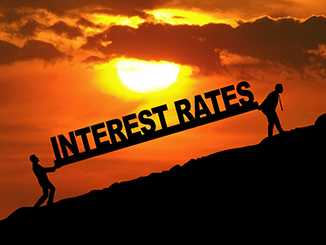It’s no secret that the US government has a problem with spending and debt. For decades the government has consistently spent more money than it takes in, requiring it to issue debt to fund its operations. Even the so-called years of budget “surpluses” in the late 1990s resulted in increases in the national debt since off-budget deficits outweighed on-budget surpluses. But if things don’t improve and quickly, the federal government risks losing complete control over the federal budget.
One of the largest items of federal spending today is interest on the national debt. While it isn’t yet the largest that it has ever been in terms of the percentage of federal spending, it is the largest in terms of overall dollar value and over the next few years it could end up becoming the largest single category of expenditure in the federal budget. That brings up the prospect of the federal government having to issue ever more debt just to pay off the interest on its existing debt, which is a very scary scenario to have to face.
Fiscal year 2017 saw the federal government spend $458 billion on interest, the largest sum in history. Through July 2018, the first 10 months of FY 2018, the federal government has already spent nearly $456 billion on interest. Don’t be surprised to see the final numbers for FY 2018 end up at over $500 billion, or at least a 10% increase over last year’s figures.
You have to remember that the composition of the national debt is important too. Back in the late 1980s the government was paying over $200 billion every year in interest. Part of that was due to the higher interest rates that prevailed at the time, but much of that debt was being paid by the government to the government. Remember that the Social Security system used to take in more money than it paid out. Social Security tax revenues have been exceeded by benefit payments since 2010, and only interest income has made up the difference. 2018 is expected to be the first year in which total income is less than benefits paid, and that gap is expected to widen until the trust find is exhausted in 2034.
Whereas roughly 29% of federal debt interest was non-marketable or intragovernmental debt in 1988, that figure has declined to 26% today and will continue to decline as the Social Security trust fund is exhausted. Over half of the current $5.6 trillion of intragovernmental debt currently in existence will disappear. That means that there will be trillions more dollars of debt owned by investors and institutions who will put pressure on the federal government to increase the interest it pays in order to keep them buying the debt that enables the government to operate.
Right now the average interest rate on marketable Treasury securities is 2.316%, up from 2.080% a year ago. Compare that to January 2001 when the average was 6.620%, or January of 2008 when it was 4.573%. If interest rates get back to those levels, and they will eventually, the federal government could spend over a trillion dollars every year just on interest, and that’s assuming that the debt doesn’t increase from its current levels. Interest expense will eventually dwarf military spending and entitlement spending. It would be the largest single expenditure within the federal budget and would grow larger every year.
The effect of that on investors would be catastrophic, as it would eventually require higher tax revenues every year to continue servicing that debt. Just imagine personal income, corporate income, and capital gains taxes increasing year after year just to pay off the interest on the debt. But that won’t be all that happens.
Inflation will increase too as the government attempts to pay off its creditors with increasingly devalued dollars. Anyone living on a fixed income, interest income in retirement, or a conservative retirement-oriented bond portfolio will see their standard of living decrease year after year once that occurs. If they haven’t taken steps to protect their assets by investing in gold to protect against inflation and devaluation of the dollar, they’ll find themselves in a lot of financial pain.
This interest crisis isn’t something that crept up to take people by surprise. It’s the logical and easily foreseeable consequence of the government’s inability to spend within its means. Investors who see the writing on the wall and who take the necessary steps to protect their wealth today will save themselves a lot of heartache down the road.
This article was originally posted on Goldco.



